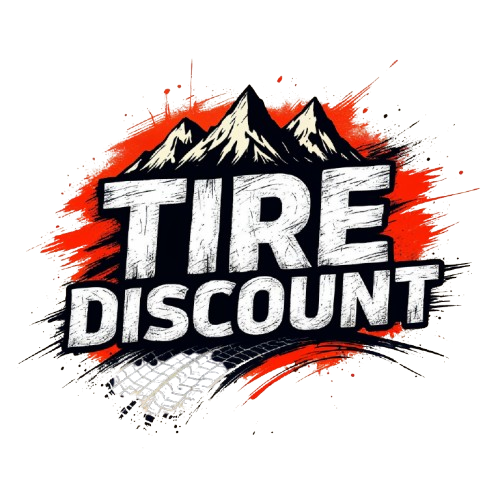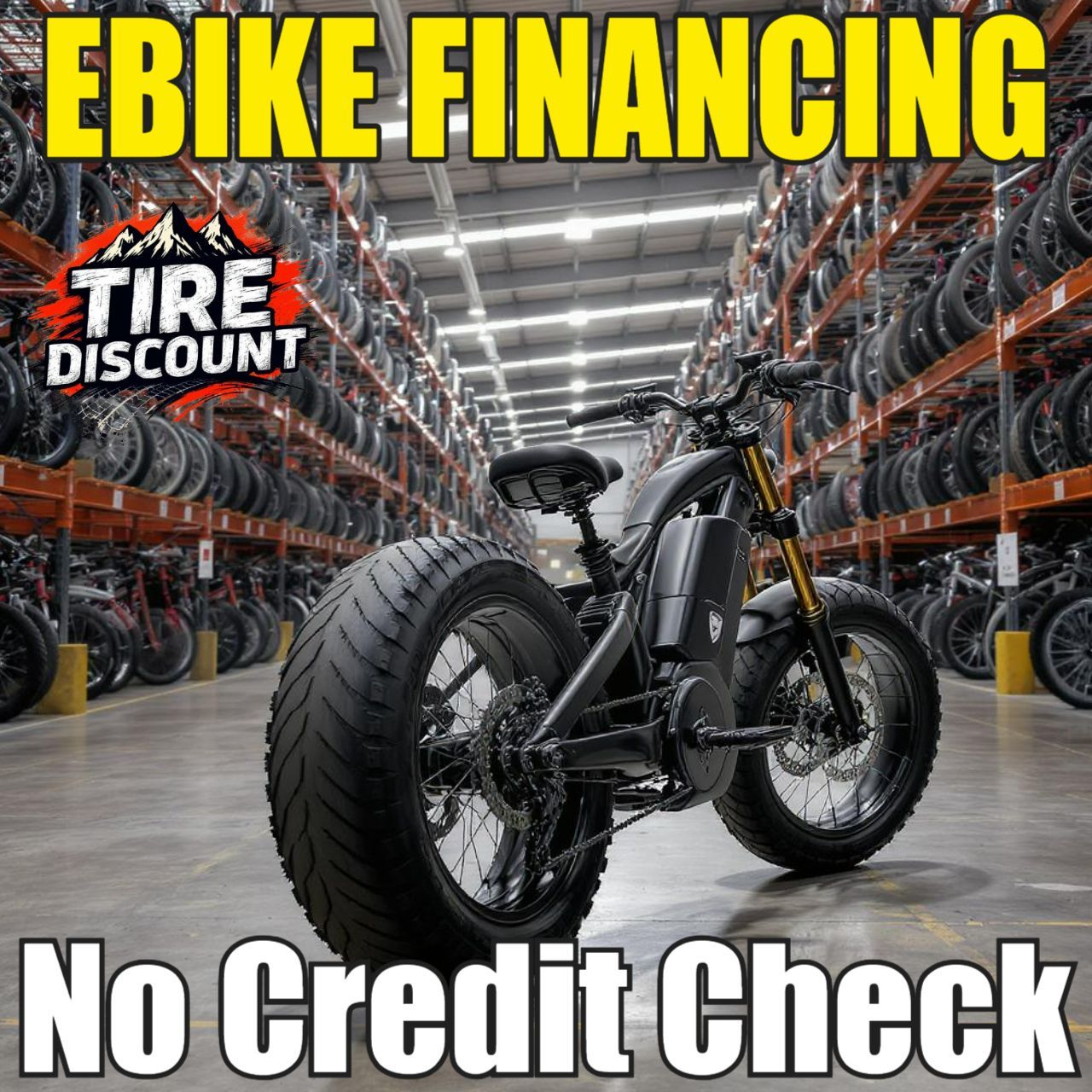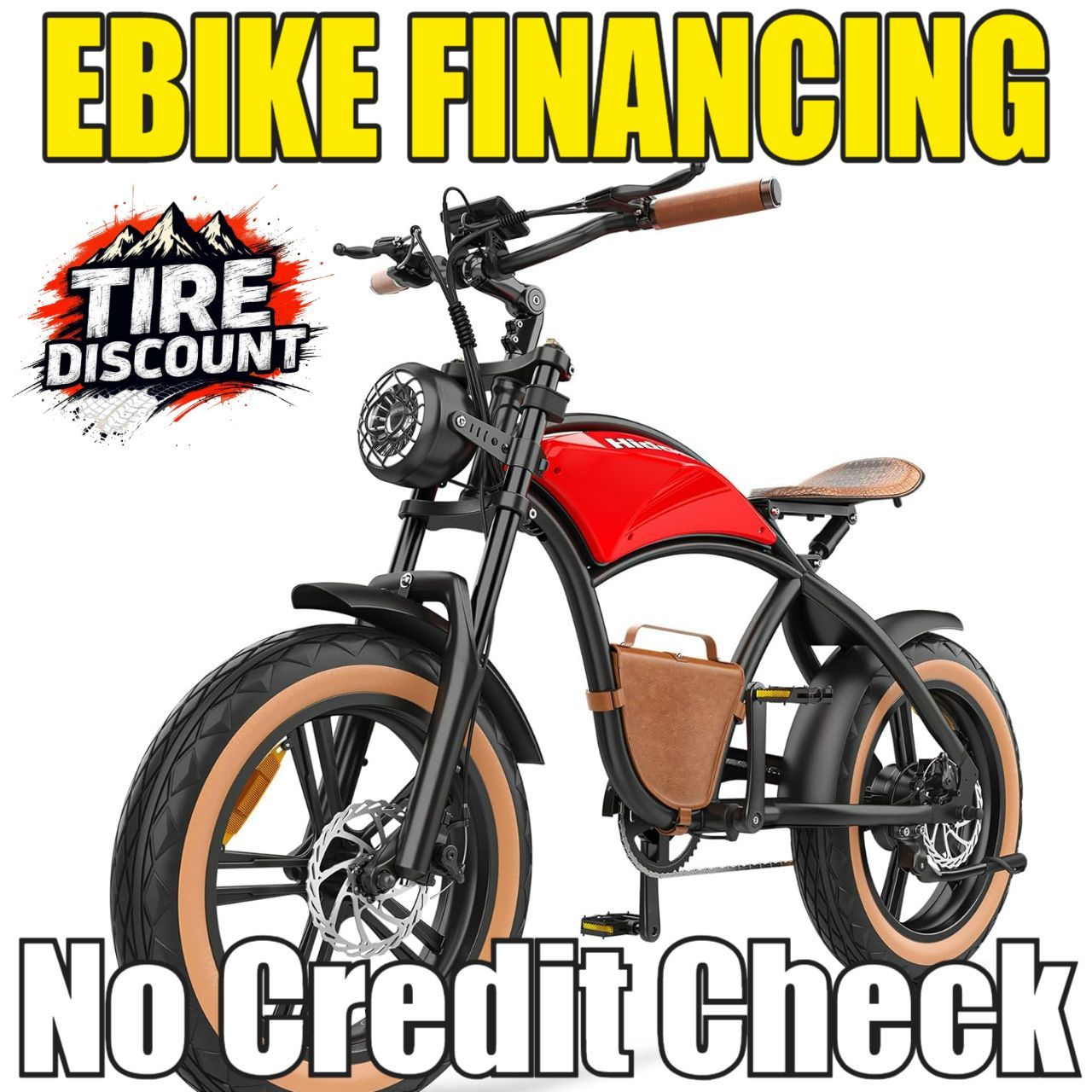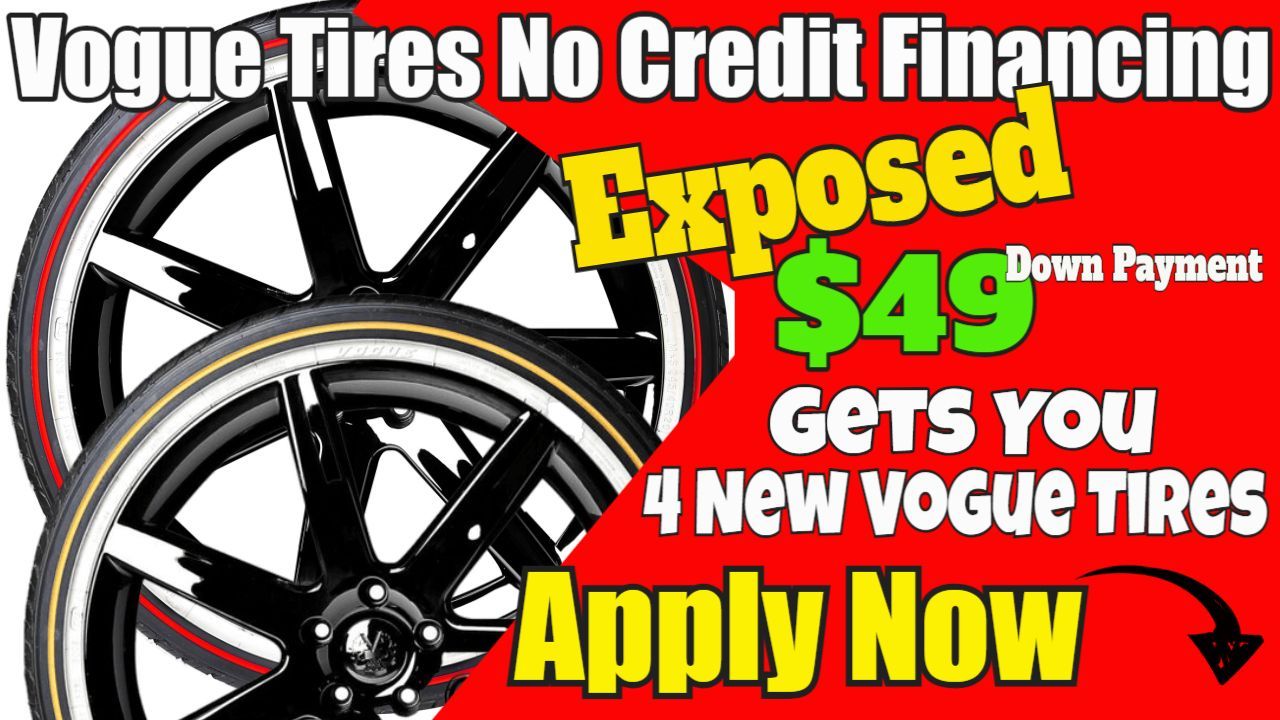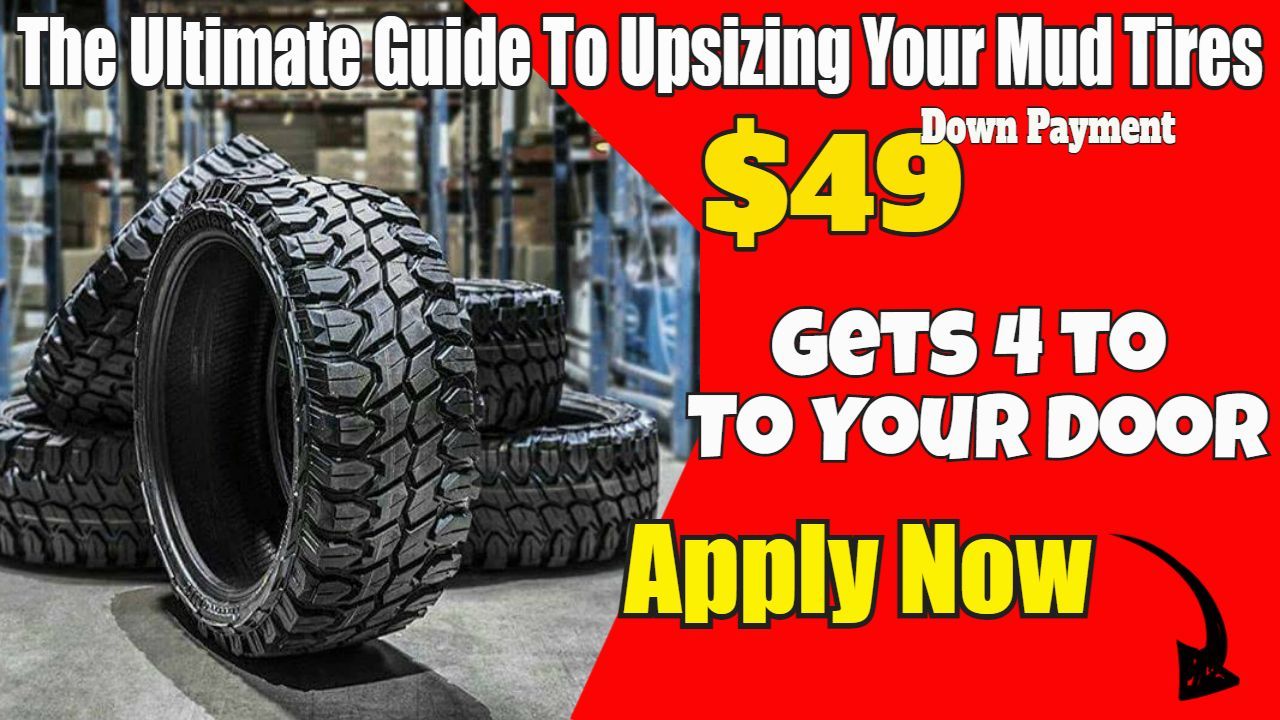7 Ways To Extend The Life Of Commercial Semi Tires
Extending the life of commercial semi tires is crucial for optimizing performance, ensuring safety, and reducing operational costs, i.e. SAVING MONEY! Saving you money is what Tire Discount is all about - Super low commercial semi tire prices + fantastic No Credit Financing
READ TO THE END! THE MORE YOU READ THE MORE YOU SAVE!
Here are seven effective ways to achieve this:
- Regular Inspections:
- Conduct visual inspections before each trip and during routine maintenance checks.
- Look for signs of wear such as tread depth, tread patterns, and any visible damage like cuts, bulges, or punctures.
- Inspect the sidewalls for cracks, abrasions, or other abnormalities that could compromise tire integrity.
- Check tire pressure using a reliable gauge and adjust as needed to meet the manufacturer's recommended levels.
- Pre-Trip Inspections:
- Before embarking on a journey, conduct a thorough visual inspection of all tires.
- Check the tread depth using a tread depth gauge to ensure it meets legal requirements and provides adequate traction, especially in wet or slippery conditions.
- Inspect the sidewalls for any signs of damage, including cuts, bulges, cracks, or punctures. These can weaken the tire structure and lead to potential failures on the road.
- Look for embedded objects like nails, stones, or debris that could cause air leaks or tire punctures.
- Verify that valve stems are intact and valve caps are in place to prevent dust and moisture from entering the valve core, which can lead to pressure loss.
- Routine Maintenance Checks:
- Incorporate tire inspections into your routine maintenance schedule, which may include daily, weekly, or monthly checks depending on vehicle usage and operating conditions.
- During maintenance checks, pay attention to wear patterns on the tires. Uneven wear can indicate issues such as misalignment, improper inflation, or suspension problems that need to be addressed promptly.
- Use a tire pressure gauge to measure tire pressure accurately. Compare the readings to the manufacturer's recommended pressure levels based on load and operating conditions.
- Inspect the condition of the tire rims or wheels for any signs of damage, corrosion, or bent rims that could affect tire mounting and performance.
- Check for proper tire seating on the wheel by examining the bead area for any gaps or irregularities that could lead to air leaks.
- Digital Monitoring Systems:
- Consider implementing digital tire monitoring systems that provide real-time data on tire pressure, temperature, and performance.
- These systems use sensors mounted inside the tires to transmit information to a central monitoring unit, alerting drivers or fleet managers to potential issues such as underinflation, overloading, or overheating.
- Utilize the data collected by these systems to identify trends, track tire health over time, and take proactive measures to prevent tire-related problems.
- Training and Education:
- Train drivers and maintenance personnel on proper tire inspection techniques and the importance of regular tire maintenance.
- Emphasize the role of tire inspections in promoting safety, reducing downtime due to tire failures, and optimizing fuel efficiency.
- Provide resources such as inspection checklists, maintenance guidelines, and educational materials to reinforce best practices and ensure consistent compliance with inspection protocols.
- Documentation and Record-Keeping:
- Maintain detailed records of tire inspections, including inspection dates, findings, corrective actions taken, and tire performance metrics.
- Use digital tools or software systems to streamline documentation and analysis of inspection data, allowing for trend analysis, performance tracking, and predictive maintenance planning.
- Documenting inspections and maintenance activities helps demonstrate regulatory compliance, track warranty coverage, and identify areas for improvement in tire management practices.
2. Proper Inflation:
- Maintaining optimal tire pressure is critical for tire longevity and performance.
- Under-inflated tires experience increased rolling resistance, leading to higher fuel consumption and accelerated wear.
- Over-inflated tires are prone to uneven wear patterns and reduced traction, especially on wet or slippery surfaces.
- Use a calibrated tire pressure gauge to check pressure regularly, preferably when tires are cold, and adjust according to load requirements.
- Optimal Performance:
- Properly inflated tires ensure optimal vehicle performance, including better handling, steering response, and braking capabilities.
- Maintaining the correct tire pressure reduces rolling resistance, which can improve fuel efficiency and reduce operating costs for commercial fleets.
- Underinflated tires increase friction and heat buildup, leading to accelerated tire wear, reduced traction, and potential tire failures.
- Safety and Stability:
- Properly inflated tires contribute to vehicle stability, especially during cornering, lane changes, and emergency maneuvers.
- Adequately inflated tires maintain their shape and structural integrity, reducing the risk of blowouts, sidewall damage, and loss of control while driving.
- Correct tire pressure ensures consistent contact with the road surface, enhancing grip and traction in various driving conditions, such as wet or slippery roads.
- Tire Wear and Longevity:
- Improper inflation, either overinflation or underinflation, can lead to uneven tire wear patterns, such as cupping, scalloping, or shoulder wear.
- Overinflated tires are prone to wearing out prematurely in the center tread area, while underinflated tires wear more on the edges.
- Maintaining the recommended tire pressure extends tire life, reduces the frequency of tire replacements, and maximizes the return on investment for commercial fleet operators.
- How to Ensure Proper Inflation:
- Refer to the manufacturer's specifications or the tire placard on the vehicle to determine the recommended tire pressure for each axle, based on load capacity and operating conditions.
- Use a reliable tire pressure gauge to check tire pressure regularly, ideally before each trip or at least once a week during routine maintenance checks.
- Measure tire pressure when the tires are cold, as heat from driving can increase tire pressure and provide inaccurate readings.
- Inflate tires to the recommended pressure level using an air compressor equipped with a pressure regulator to ensure precise inflation.
- Avoid overinflating tires, as excessive pressure can lead to reduced traction, harsh ride quality, and increased vulnerability to road hazards.
- Monitor tire pressure using digital tire monitoring systems that provide real-time pressure readings and alerts for both drivers and fleet managers.
- Educate drivers and maintenance personnel on the importance of proper tire inflation, including the potential consequences of underinflation and overinflation on tire performance and safety.
3. Balanced Loads:
- Ensure that cargo is evenly distributed across all axles to prevent overloading specific tires.
- Imbalanced loads can cause excessive stress on certain tires, leading to premature wear and potential failures.
- Use load distribution strategies such as adjusting cargo placement or using load leveling devices to maintain balance.
Balanced loads play a crucial role in maintaining the integrity and performance of commercial semi tires. Here's an expanded look at why balanced loads are essential and how they contribute to tire longevity and safety:
- Even Wear Distribution:
- Balanced loads ensure that each tire on an axle carries its fair share of the weight, preventing overloading of individual tires.
- When loads are evenly distributed across all tires, tire wear is more uniform, reducing the risk of premature wear and tire damage.
- Uneven load distribution can lead to accelerated tire wear on certain tires, causing irregular wear patterns such as cupping, scalloping, or shoulder wear.
- Optimal Handling and Stability:
- Balanced loads contribute to better vehicle handling, stability, and control, especially during cornering, braking, and acceleration.
- When the weight is evenly distributed, the vehicle maintains proper traction and grip on the road surface, reducing the risk of skidding or loss of control.
- Balanced loads help minimize the effects of weight shifts, such as sway or bounce, which can affect driver comfort and safety.
- Reduced Stress on Tires:
- Properly balanced loads reduce the stress and strain on tires, wheel components, suspension systems, and other vehicle parts.
- Overloading or uneven loading can cause excessive pressure on certain tires, leading to increased heat buildup, tire fatigue, and potential tire failures.
- Balanced loads promote a more efficient and stable ride, minimizing the likelihood of tire blowouts, sidewall damage, and other tire-related issues.
- Tips for Achieving Balanced Loads:
- Use load distribution guidelines provided by the vehicle manufacturer and adhere to weight limits specified for each axle and tire position.
- Properly secure cargo and ensure it is evenly distributed within the cargo area to prevent shifting or imbalanced loads during transit.
- Use load scales or weight distribution systems to accurately measure and distribute weight across multiple axles, especially in heavy-duty vehicles and trailers.
- Regularly inspect and adjust load distribution as needed, especially when loading and unloading cargo or adjusting vehicle configurations.
- Educate drivers and logistics personnel on the importance of balanced loads, including the impact on tire performance, fuel efficiency, and overall vehicle safety.
4. Wheel Alignment:
- Proper wheel alignment ensures that tires make optimal contact with the road surface, reducing uneven wear.
- Misaligned wheels can cause tires to wear unevenly, leading to irregular tread patterns and reduced tire life.
Regularly check wheel alignment using precision equipment and adjust as necessary to correct camber, caster, and toe angles.
Wheel alignment is a critical aspect of maintaining commercial semi tires and ensuring optimal vehicle performance. Let's delve deeper into the importance of wheel alignment and how it contributes to extending the life of tires:
Even Tire Wear:
Proper wheel alignment ensures that all tires make uniform contact with the road surface, promoting even tire wear across the tread.
Misaligned wheels can cause uneven wear patterns such as camber wear (inner or outer edge wear), toe wear (feathering or scalloping), or diagonal wear (heel-to-toe wear), leading to premature tire replacement.
By correcting wheel alignment, fleet managers can maximize tire lifespan and reduce replacement costs.
Enhanced Fuel Efficiency:
- Misaligned wheels can create additional rolling resistance, causing the vehicle's engine to work harder and consume more fuel.
- Correct wheel alignment reduces rolling resistance, improving fuel efficiency and lowering operational costs for commercial fleets.
- Maintaining proper alignment also contributes to a smoother ride, reducing driver fatigue and improving overall driving experience.
Optimal Vehicle Handling:
- Wheel misalignment can affect vehicle handling and steering response, leading to issues such as drifting, pulling to one side, or steering wheel vibration.
- Proper wheel alignment ensures precise steering control, stability, and responsiveness, enhancing driver safety and confidence on the road.
- Improved handling reduces the risk of accidents, especially during emergency maneuvers or adverse driving conditions.
Alignment Types:
- There are three main types of wheel alignment: front-end alignment (toe, camber, caster), thrust angle alignment (rear axle alignment), and four-wheel alignment (comprehensive alignment of all wheels).
- Fleet operators should schedule regular wheel alignment inspections and adjustments according to manufacturer recommendations, maintenance schedules, or after significant vehicle modifications.
- Advanced alignment technologies, such as laser alignment systems or computerized alignment equipment, offer precise measurements and adjustments for optimal results.
Proactive Maintenance:
- Incorporating wheel alignment checks into routine maintenance schedules can prevent potential alignment issues before they escalate.
- Fleet technicians should inspect suspension components, steering systems, and tire conditions during alignment checks to identify any underlying issues that may affect alignment or tire performance.
- Educating drivers on the importance of reporting steering irregularities, vibrations, or handling issues can facilitate early detection of alignment problems.
By prioritizing wheel alignment as part of comprehensive maintenance practices, commercial fleet managers can prolong tire life, improve fuel economy, enhance vehicle safety, and reduce overall operating costs. Regular alignment checks and adjustments ensure that commercial semi trucks operate at peak performance levels, delivering optimal efficiency and reliability on the road.
5. Proper Tire Rotation:
- Implement a systematic tire rotation schedule based on vehicle type, tire position, and wear patterns.
- Regular rotation promotes even tread wear and extends tire life by distributing wear across all tires.
- Follow the tire manufacturer's recommended rotation patterns, typically rotating front and rear tires or using cross-rotation patterns for dual-tire setups.
Proper tire rotation is a key maintenance practice that contributes significantly to extending the life of commercial semi tires. Let's delve deeper into why tire rotation is essential and how it can benefit fleet operators:
Uniform Wear Distribution:
- Tire rotation involves moving tires from one position to another on the vehicle at regular intervals.
- By rotating tires, fleet managers can achieve more uniform wear distribution across all tires.
- Different positions on the vehicle experience varying levels of stress and wear due to factors like weight distribution, steering, and drive configurations.
- Regular rotation helps mitigate uneven wear patterns, such as front tires wearing more on the edges (toe wear) or rear tires experiencing accelerated wear due to drive forces.
Maximized Tire Lifespan:
- Uneven tire wear can lead to premature tire replacement, increasing operational costs for fleet operators.
- Proper tire rotation extends the lifespan of tires by ensuring that each tire wears evenly and efficiently.
- By following recommended rotation patterns based on vehicle type, tire construction, and driving conditions, fleet managers can maximize the mileage potential of their tires.
Optimized Performance:
- Even tire wear resulting from regular rotation contributes to consistent performance characteristics of tires.
- Balanced tread wear maintains traction and handling capabilities, enhancing vehicle stability, braking performance, and overall road safety.
- Properly rotated tires provide predictable and responsive handling, which is crucial for commercial vehicles navigating diverse road conditions and payloads.
Balancing Wear on Dual Tires:
- Dual tires on commercial trucks, such as those on drive axles or trailers, can experience uneven wear if not rotated regularly.
- Tire rotation helps balance wear between dual tires, preventing one tire from wearing out faster than its counterpart.
- Balanced wear prolongs the life of dual tires and maintains optimal traction and load-carrying capacity for enhanced operational efficiency.
Rotation Patterns and Frequency:
- Fleet operators should adhere to manufacturer-recommended rotation patterns and intervals based on tire type, vehicle configuration, and usage.
- Common rotation patterns include front-to-rear, crisscross (X-pattern), and side-to-side rotations, depending on tire positions and wear characteristics.
- Regular inspection of tire tread depth, wear patterns, and tire pressures during rotation checks allows for early detection of alignment issues or tire abnormalities.
Driver Awareness and Training:
- Educating drivers about the importance of tire rotation and monitoring tire wear can aid in early detection of potential issues.
- Encouraging drivers to report any irregularities in handling, vibrations, or tire wear patterns enables proactive maintenance and corrective actions.
- Incorporating proper tire rotation into routine maintenance schedules is essential for commercial fleet management. It promotes tire longevity, improves vehicle performance and safety, and ultimately reduces operating costs associated with premature tire replacements. Fleet operators should prioritize regular rotation as part of comprehensive tire care practices to optimize tire investment and ensure reliable operations on the road.
6. Avoid Overloading:
- Adhere to weight limits specified for your commercial vehicle, including axle and gross vehicle weight ratings (GVWR).
- Overloading can lead to excessive heat buildup in tires, accelerating wear and increasing the risk of blowouts.
- Utilize weigh stations and load scales to ensure compliance with legal weight regulations and maintain safe operating conditions.
Avoiding overloading is a crucial aspect of commercial semi tire maintenance that directly impacts tire longevity, vehicle performance, and overall safety. Let's delve deeper into why avoiding overloading is essential and how fleet operators can implement strategies to mitigate this risk effectively:
Preserving Load Capacity:
- Every tire has a designated load-carrying capacity specified by the manufacturer.
- Overloading a tire beyond its rated capacity puts excessive stress on the tire structure, leading to accelerated wear, increased heat buildup, and potential tire failure.
- Fleet operators must adhere to load limits specified by regulatory standards and manufacturer guidelines to ensure optimal tire performance and longevity.
Preventing Structural Damage:
- Overloading can cause structural damage to tires, such as sidewall bulges, ply separations, and tread delamination.
- Excessive loads strain the tire's internal components, compromising its ability to withstand road forces and maintain proper inflation pressure.
- Structural damage not only shortens tire lifespan but also poses safety risks, including blowouts and loss of vehicle control, especially during high-speed operations.
Maintaining Tire Integrity:
- Properly inflated tires distribute load forces evenly across the tire surface, reducing stress concentrations that can lead to premature wear and damage.
- Overloaded tires experience higher flexing and heat generation, accelerating rubber degradation and reducing tire integrity over time.
- Maintaining recommended inflation pressures based on axle loads and tire specifications is critical to preserving tire integrity and preventing overloading-related issues.
Optimizing Fuel Efficiency:
- Overloading increases rolling resistance, requiring more energy to propel the vehicle forward.
- Increased rolling resistance leads to higher fuel consumption, negatively impacting fuel efficiency and operational costs.
- By avoiding overloading and adhering to proper load distribution practices, fleet operators can optimize fuel efficiency and reduce their environmental footprint.
Load Monitoring and Management:
- Implementing load monitoring systems and axle weight limits helps prevent overloading incidents.
- Regularly inspecting cargo weight, axle loads, and tire pressures enables proactive load management and adjustment as needed.
- Utilizing load scales, axle load sensors, and onboard telematics systems provides real-time data insights for optimizing load distribution and avoiding overloading risks.
Driver Training and Awareness:
- Educating drivers about load limits, weight distribution, and the impact of overloading on tire performance and safety is crucial.
- Encouraging drivers to conduct pre-trip inspections, monitor cargo weights, and report any load-related concerns fosters a proactive approach to avoiding overloading.
- By prioritizing load management, adhering to weight limits, and promoting driver awareness, fleet operators can significantly reduce the risk of overloading and its detrimental effects on tire health and overall vehicle performance. Implementing robust load monitoring practices, conducting regular inspections, and providing ongoing training ensure a proactive approach to maintaining tire integrity and enhancing operational efficiency.
7. Drive Responsibly:
- Promote safe and responsible driving habits among fleet drivers to minimize tire stress and wear.
- Avoid aggressive driving behaviors such as sudden accelerations, hard braking, and sharp turns that can cause tire scrubbing and wear.
- Encourage defensive driving techniques, maintain safe following distances, and adapt driving speed to road and weather conditions to reduce tire wear and maintain traction.
Driving responsibly is a fundamental aspect of extending the life of commercial semi tires and ensuring overall vehicle safety. Let's explore why responsible driving practices are crucial and how they contribute to tire longevity:
Minimizing Aggressive Driving:
- Aggressive driving behaviors such as rapid acceleration, hard braking, and sharp cornering put excessive stress on tires.
- Sudden acceleration and deceleration cause rapid tire wear, especially on the tread shoulders, leading to reduced tread life and potential tire damage.
- Encouraging drivers to adopt smooth driving techniques and maintain consistent speeds helps minimize tire wear and preserve tire integrity.
Avoiding Over-Speeding:
- Driving at speeds higher than recommended not only increases the risk of accidents but also accelerates tire wear.
- High speeds generate more heat in tires, causing rubber compound breakdown and reducing tire durability.
- Adhering to speed limits and adjusting driving speeds based on road conditions and load weight helps prevent overheating and premature tire failure.
Proper Braking Practices:
- Excessive braking, especially under heavy loads, can lead to increased tire wear and heat buildup.
- Encouraging gradual braking and using engine braking techniques when appropriate helps reduce strain on tires and extends their lifespan.
- Properly maintained braking systems, including brake adjustments and regular inspections, contribute to overall vehicle safety and tire longevity.
Avoiding Overloading:
- As discussed earlier, overloading places significant stress on tires and accelerates wear and structural damage.
- Drivers should be aware of weight limits, load distribution guidelines, and axle weight ratings to prevent overloading and maintain tire health.
- Regularly checking cargo weight, conducting load inspections, and adjusting loads as necessary are essential practices for preventing overloading-related tire issues.
Maintaining Proper Tire Inflation:
- Under-inflated or over-inflated tires can lead to uneven wear, reduced fuel efficiency, and increased risk of tire blowouts.
- Drivers should regularly check tire pressures using a reliable gauge and adjust inflation levels to meet manufacturer recommendations.
- Implementing a tire pressure monitoring system (TPMS) provides real-time pressure alerts and ensures timely adjustments to maintain optimal tire inflation.
Adopting Defensive Driving Techniques:
- Defensive driving focuses on anticipating potential hazards, maintaining safe following distances, and being prepared to react to unexpected situations.
- Defensive drivers are more aware of road conditions, traffic patterns, and weather effects, allowing them to make informed decisions that protect tires and enhance overall safety.
- Providing defensive driving training and promoting a safety-first culture among drivers promotes responsible driving habits and reduces the risk of tire-related incidents.
- By emphasizing responsible driving practices, fleet operators can significantly extend the life of commercial semi tires, improve fuel efficiency, reduce maintenance costs, and enhance overall fleet safety and performance. Incorporating driver training, ongoing monitoring, and proactive maintenance measures ensures a holistic approach to tire care and longevity.
By incorporating these detailed strategies into your commercial tire maintenance program, you can effectively extend the life of your semi-truck tires, reduce operating costs, and enhance overall safety and performance on the road.

